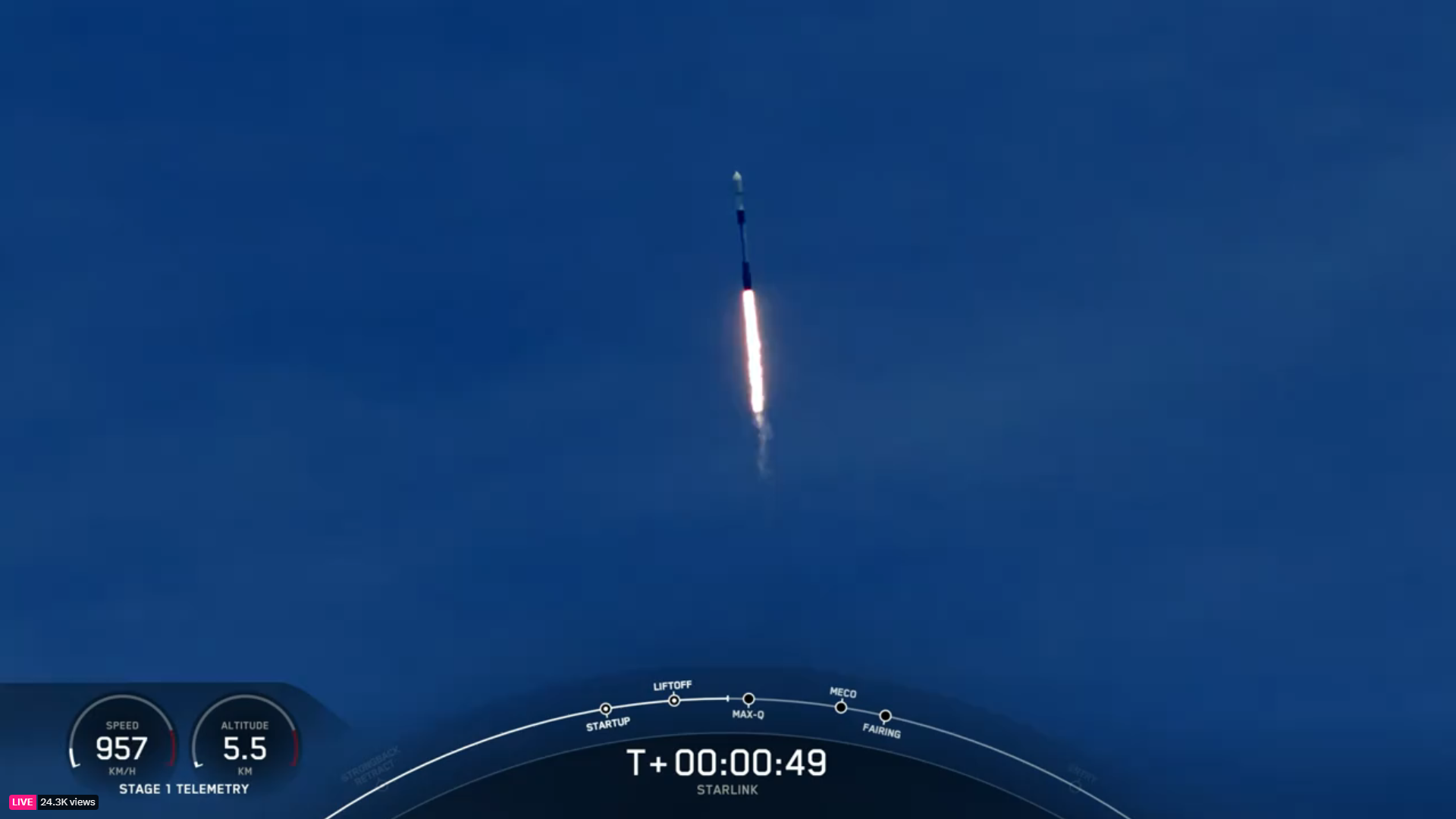
SpaceX has successfully wrapped up its 50th Falcon 9 launch inside the opening half of 2024’s fifth month. Eighteen-times-flown B1063—the current West Coast record-holding frequent flyer, having launched out of Vandenberg Space Force Base, Calif., on 17 occasions since November 2020—took flight from mountain-ringed Space Launch Complex (SLC)-4E at 11:39 a.m. PDT Tuesday, laden with 20 flat-packed Starlink satellites in support of SpaceX’s low-orbiting internet communications network.
Meanwhile, on the East Coast, teams at Cape Canaveral Space Force Station’s storied Space Launch Complex (SLC)-41 are tracking a No Earlier Than (NET) of 4:43 p.m. EDT Tuesday, 21 May, to launch Boeing’s CST-100 Starliner on the long-awaited Crew Flight Test (CFT) to the International Space Station (ISS). Veteran NASA astronauts Barry “Butch” Wilmore and Suni Williams will spend at least eight “docked” days aboard the sprawling orbital complex executing a complex program of flight test objectives before returning to a parachute-and-airbag-aided landing in the Western United States.
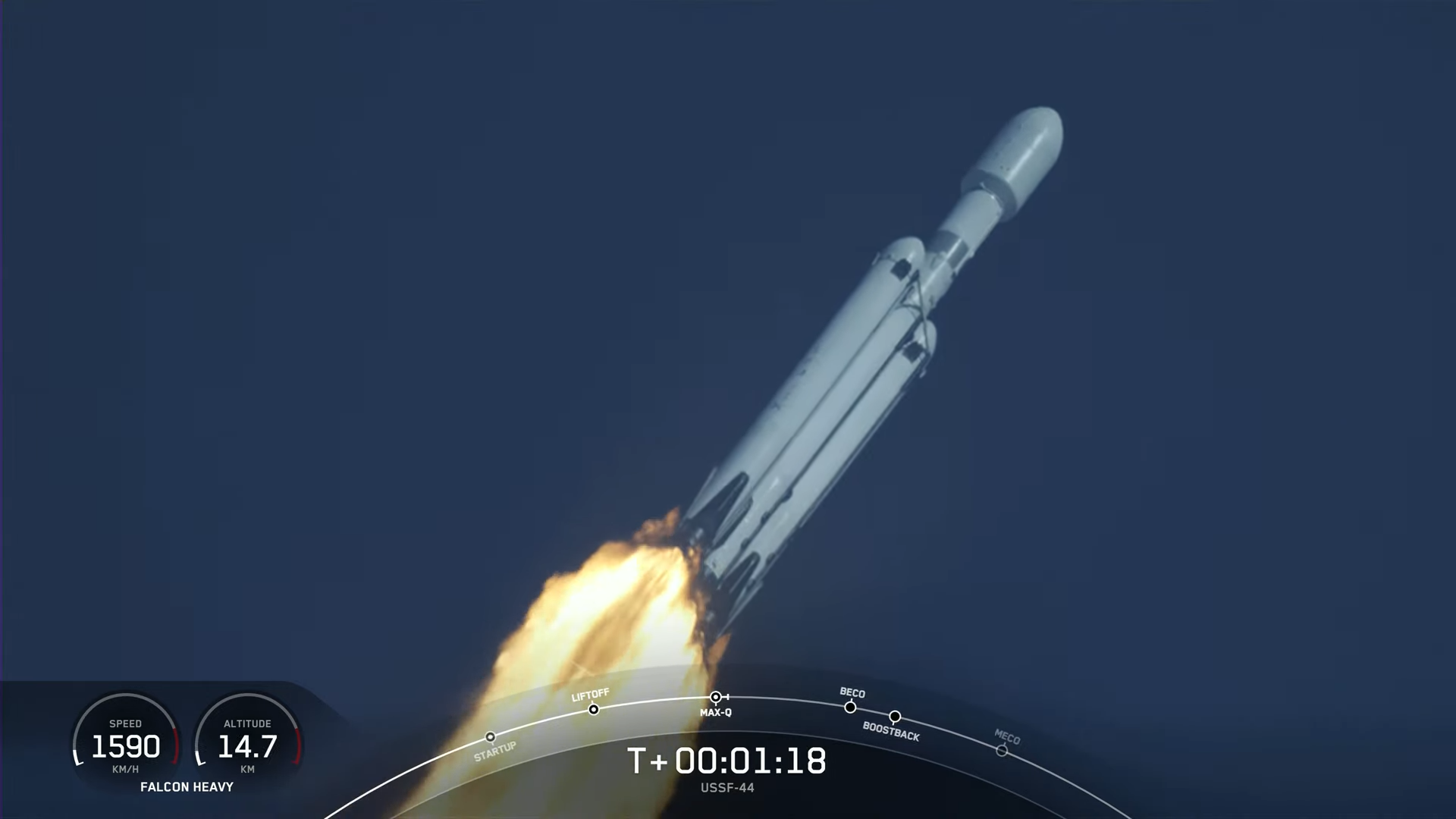

Fifty launches across an entire calendar year was unknown to SpaceX until as recently as 2022 and was first achieved in November of that year, with the magical half-century of flights not attained last year until the second week in August. Reaching No. 50 within a year’s first half is an astonishing accomplishment, accelerating the average pace of flights from one mission every 5.9 days in 2022 to one every 3.8 days last year to one every 2.7 days to date in 2024.
This spring’s cadence of missions from the West and East Coasts has been made possible using 16 reusable Falcon 9 boosters, including two brand-new cores which came online as recently as January in March. SpaceX completed the fleet’s first ten-launch month in January then passed 11 and 12 flights in a single calendar month for the first time in March, as well as flying four times from Vandenberg for the first time in January and securing a new record of less than two hours between a pair of missions in early March.
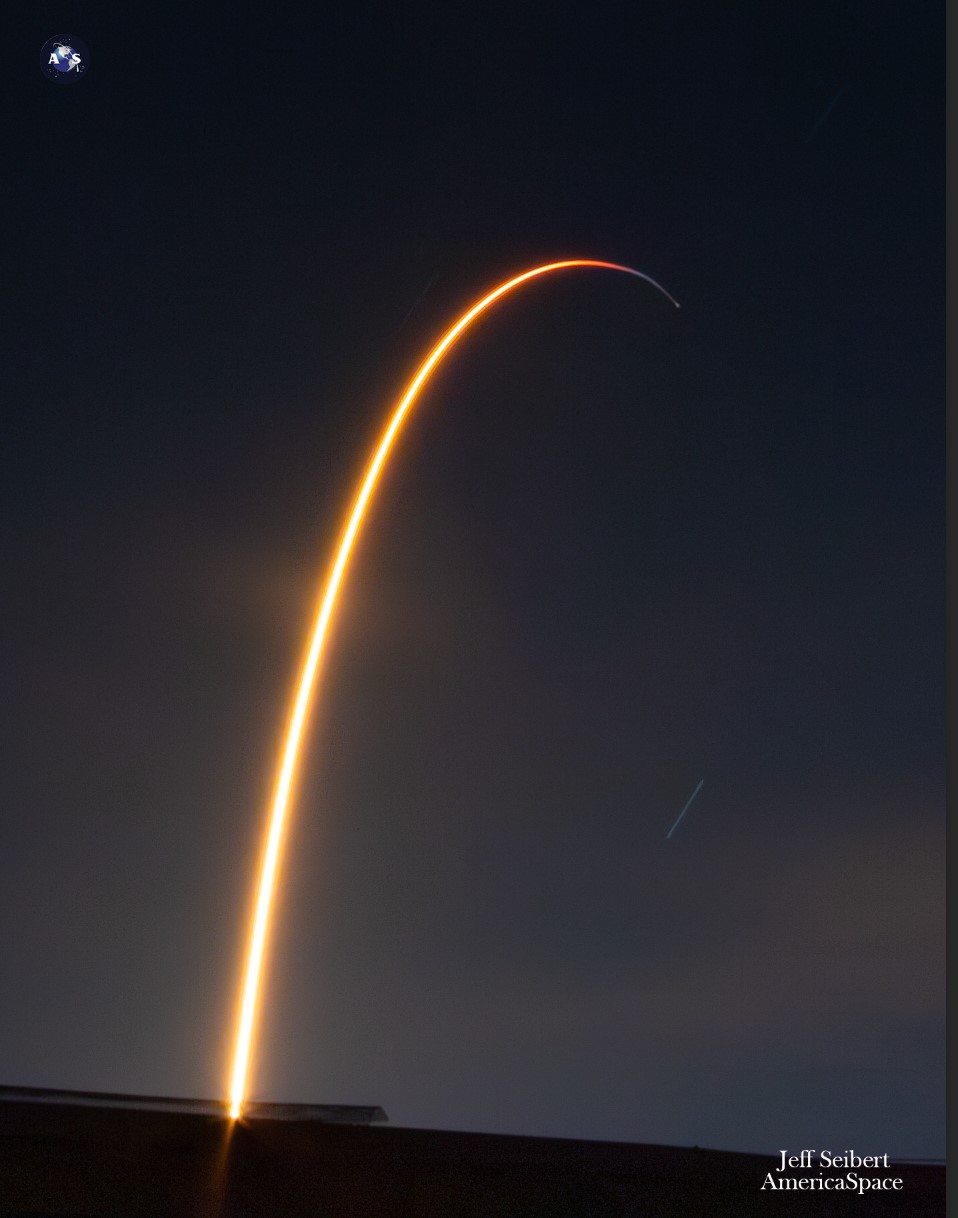

Added to that list, the fleet swept smartly through its 300th Falcon 9 flight in February and its 300th safe landing of a booster last month. And three life-leading rockets triumphantly wrapped up their record-breaking 20th launches for the first time in April.
Including today’s Vandenberg mission, 2024’s half-century of Falcon 9 flights emplaced more than 780 Starlink internet communications satellites into low-Earth orbit in 35 flat-packed batches. And although the expansion of the ever-growing Starlink constellation has consumed the lion’s share of Falcon 9 activity in the year’s opening half, other missions included three large geostationary communications satellites for Sweden, Indonesia and Paris, France-headquartered Eutelsat, two crewed and two uncrewed voyages to the International Space Station (ISS) and spacecraft designed to explore Earth’s oceans and atmospheric health and the potential habitability of the Moon.
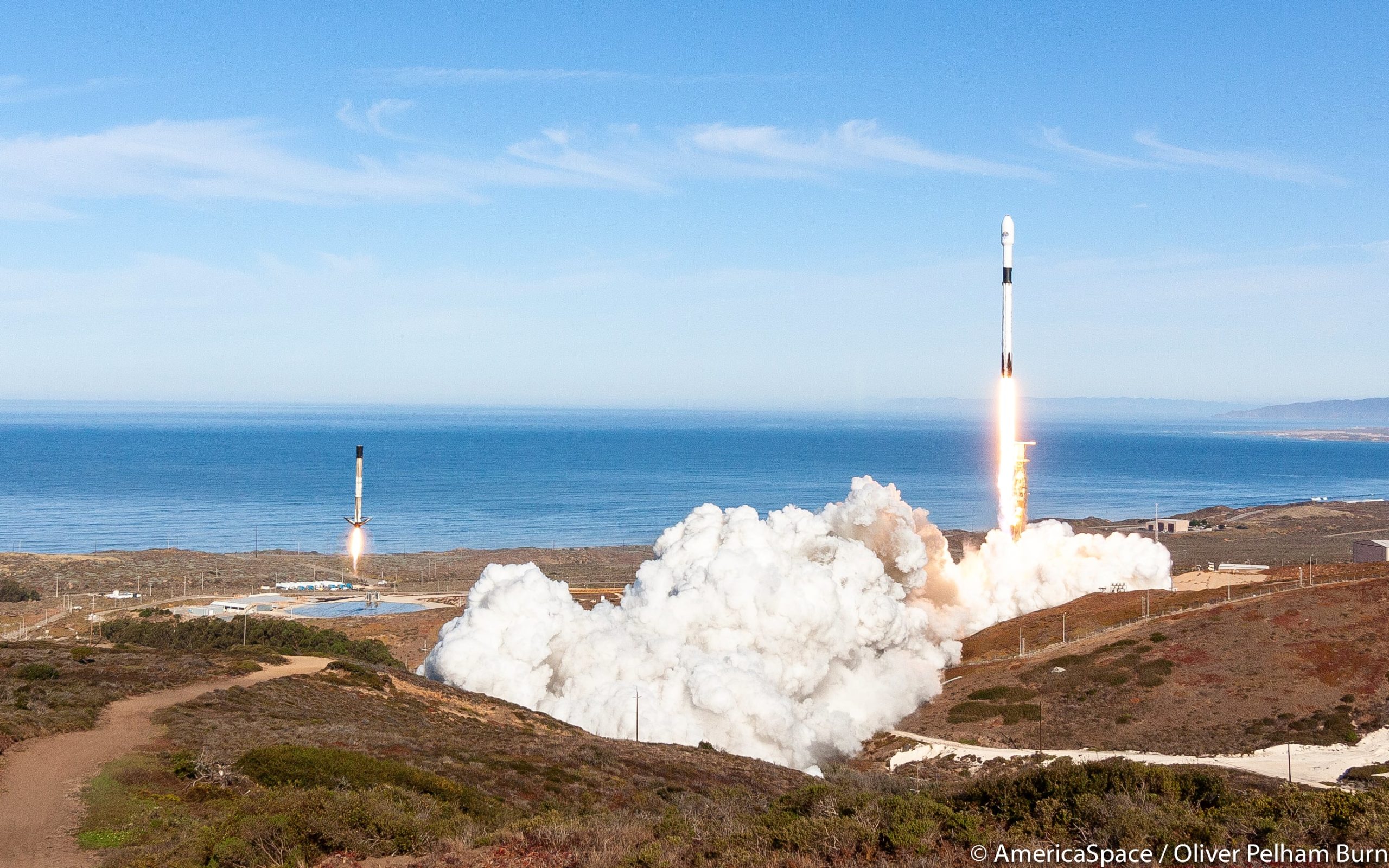

Other achievements included SpaceX’s first “Leap Day Launch” on 29 February, the flight of the first national spacefarer from Türkiye and the initial member of the U.S. Space Force’s Weather System Follow-on Microwave (WSF-M) meteorology satellite network. Sixteen of the 50 Falcon 9 flights originated from Vandenberg, which has seen in the opening half of 2024 its highest cadence of missions so far, with 13 Starlink batches totaling over 250 satellites emplaced in orbit from the West Coast, plus the 53-payload Transporter-10 “rideshare” stack and the inaugural pair of Maxar-built WorldView Legion geospatial imaging satellites earlier this month.
Flying the year’s half-century Falcon 9 mission was B1063, which was embarking on the 18th launch of her career and her 17th out of Vandenberg. She entered service in November 2020 and logged two launches in 2021, five in 2022 and seven last year.
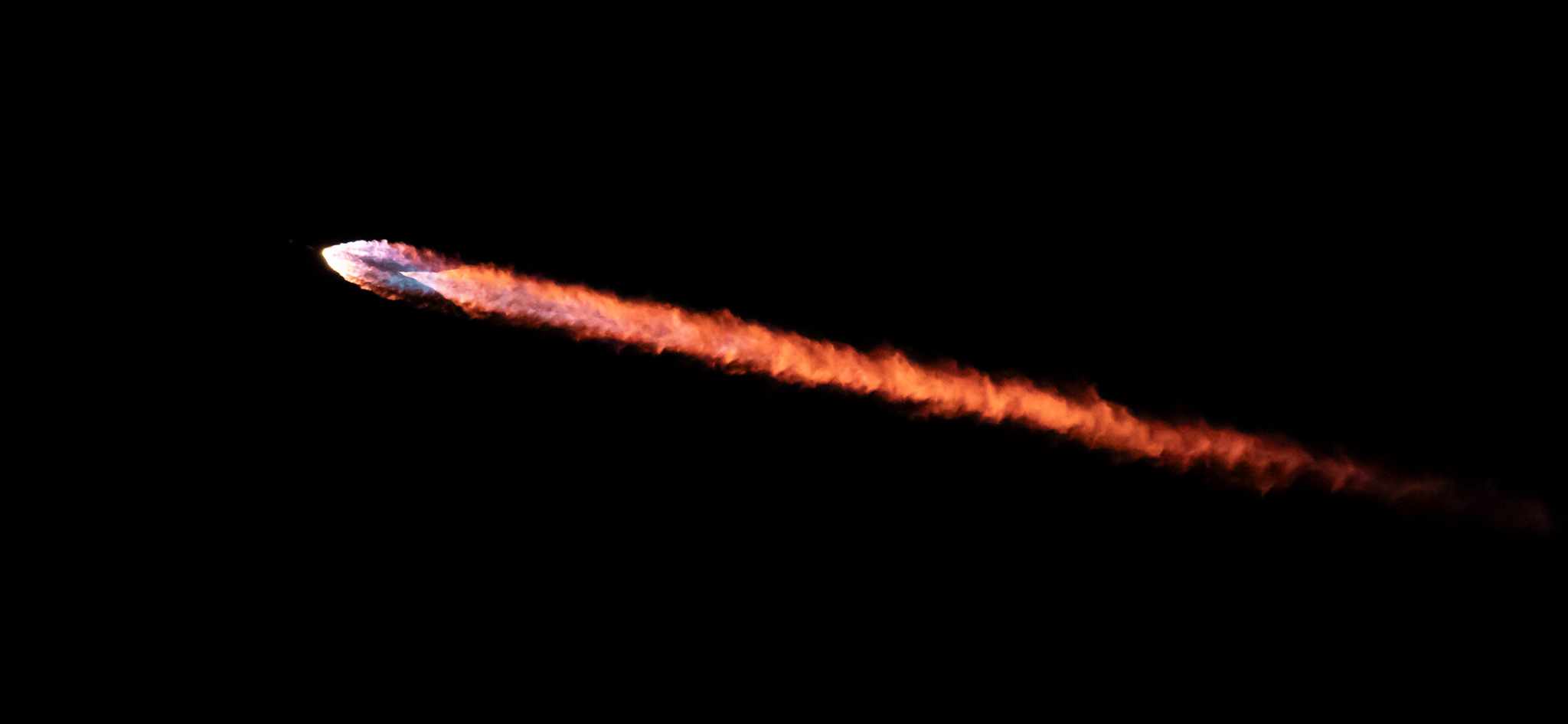

Key payloads included NASA’s Sentinel-6 Michael Freilich and Double Asteroid Redirection Test (DART), the second Tranche 0 batch of Transport and Tracking Layer (TTL) satellites for the Space Development Agency (SDA), five Iridium NEXT global mobile communications satellites, 16 advanced broadband satellites for London, England-based OneWeb, more than 500 Starlinks and April 2023’s 51-payload Transporter-7 “rideshare” mission.
Eight and a half minutes after launch, B1063 pirouetted to a smooth landing on the deck of the West Coast-based Autonomous Spaceport Drone Ship (ASDS), “Of Course I Still Love You”, situated offshore in the Pacific Ocean. And the 20 Starlinks—including 13 with “Direct-to-Cell” functionality, capable of permitting mobile network providers to offer “seamless global access to texting, calling and browsing”, whether “on land, lakes or coastal waters”, without the need to change hardware or firmware—were set to be deployed a little over an hour into the flight, as this story was being prepared.
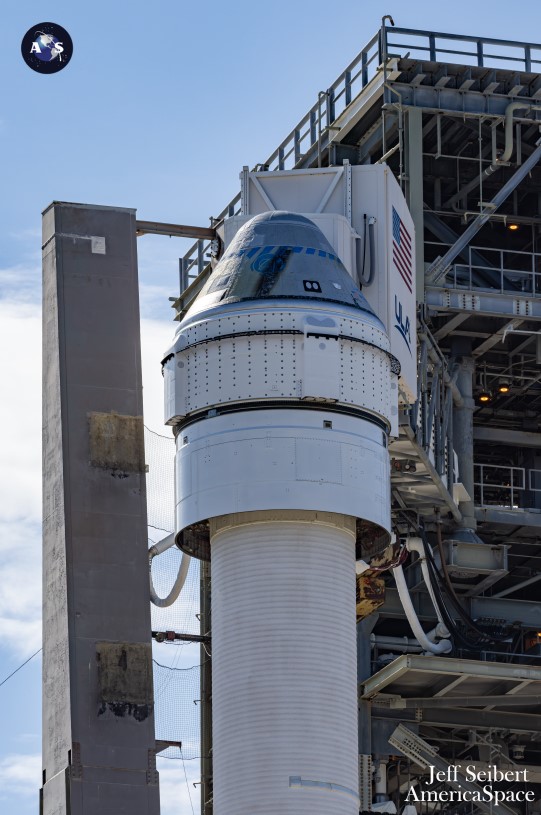

Attention also returned today to the long-awaited CFT mission, which was scrubbed less than two hours before its scheduled 10:34:14 p.m. EDT launch on 6 May following observations of a faulty oxygen relief valve on the Dual-Engine Centaur (DEC), which forms the second stage of the 172-foot-tall (52.4-meter) Atlas V booster. Wilmore and Williams had just boarded Starliner and commenced communications checks and pressure checks of their “Boeing Blue” launch and entry suits when the scrub was declared by ULA Launch Director Tom Heter III.
“The oscillating behavior of the valve during pre-launch operations ultimately resulted in mission teams calling a launch scrub,” ULA reported. “After the ground and flight crew safely egressed from SLC-41…the ULA team successfully commanded the valve closed and the oscillations were temporarily dampened.
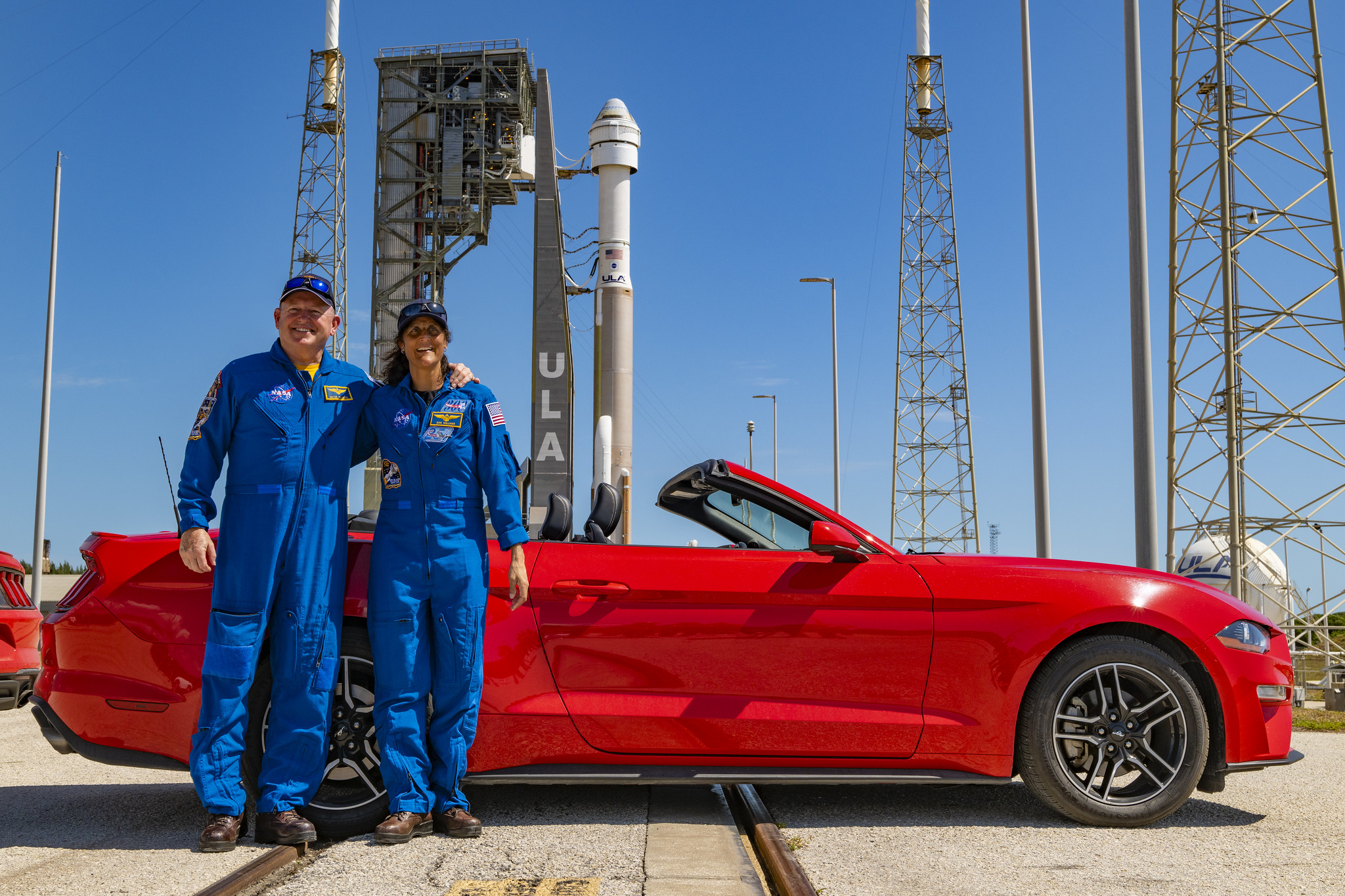

“The oscillations then reoccurred twice during fuel removal operations,” the ULA summary continued. “After evaluating the valve history, data signatures from the launch attempt, and assessing the risks relative to continued use, the ULA team determined the valve exceeded its qualifications and mission managers agreed to remove and replace the valve.”
The Atlas V was duly rolled back from SLC-41 to the 30-story Vertical Integration Facility (VIF) on 8 May and a revised NET launch target of 6:16 p.m. EDT on Friday, 17 May was established. But on Tuesday, NASA announced an additional postponement until no sooner than 4:43 p.m. EDT on Tuesday, 21 May, “to complete additional testing”.
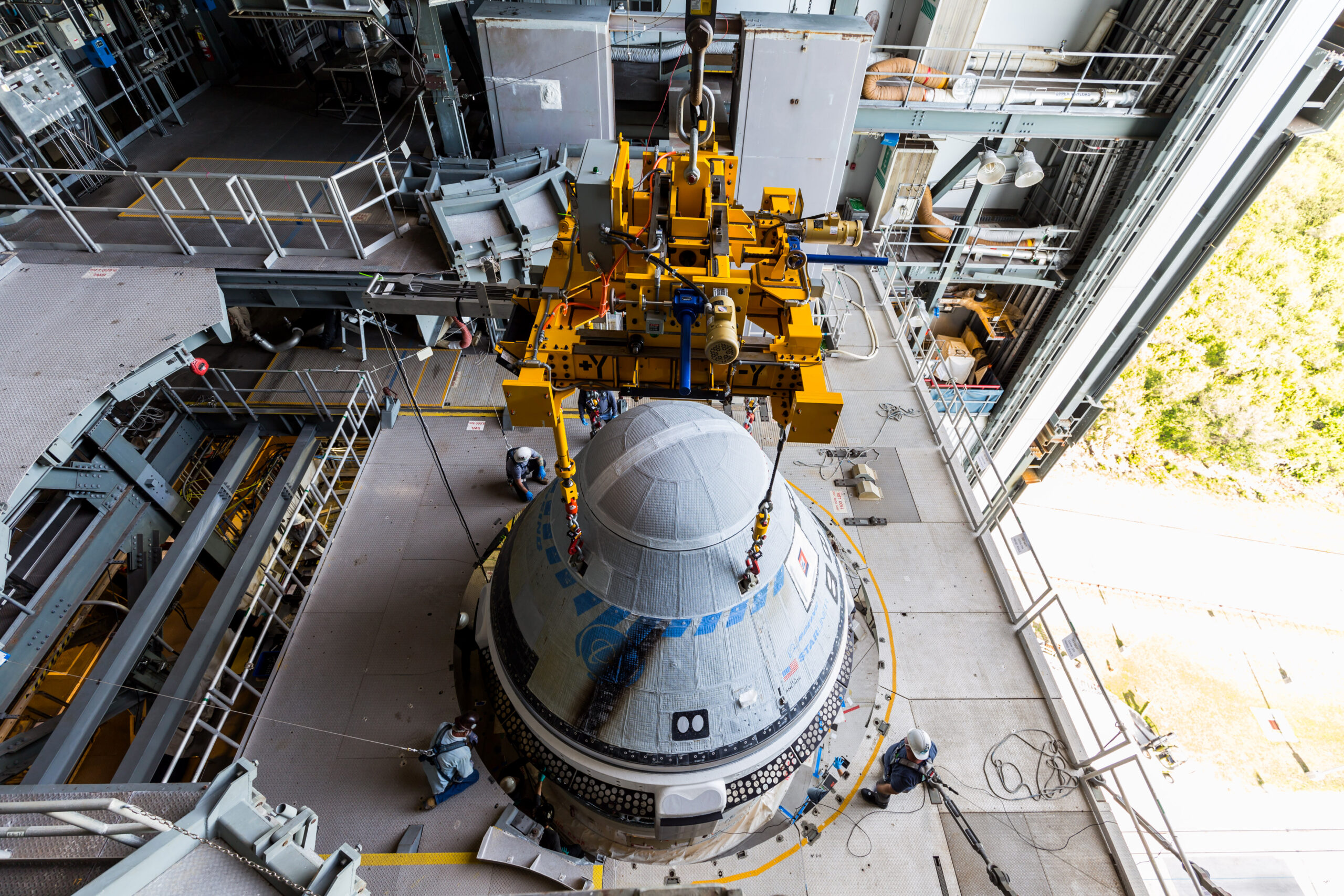

It was reported that the oxygen relief valve was successfully changed out on 11 May, after which ULA teams performed repressurization and system purge work and satisfactorily tested the replacement unit. However, a small helium leak in Starliner’s service module has been traced to a flange on a single reaction control system thruster, which necessitates additional work from NASA and Boeing personnel.
“As part of the testing, Boeing will bring the propulsion system up to flight pressurization just as it does prior to launch and then allow the helium system to vent naturally to validate existing data and strengthen flight rationale,” NASA explained. “Mission teams also completed a thorough review of the data from the 6 May launch attempt and are not tracking any other issues.”
FOLLOW AmericaSpace on Facebook and X!


